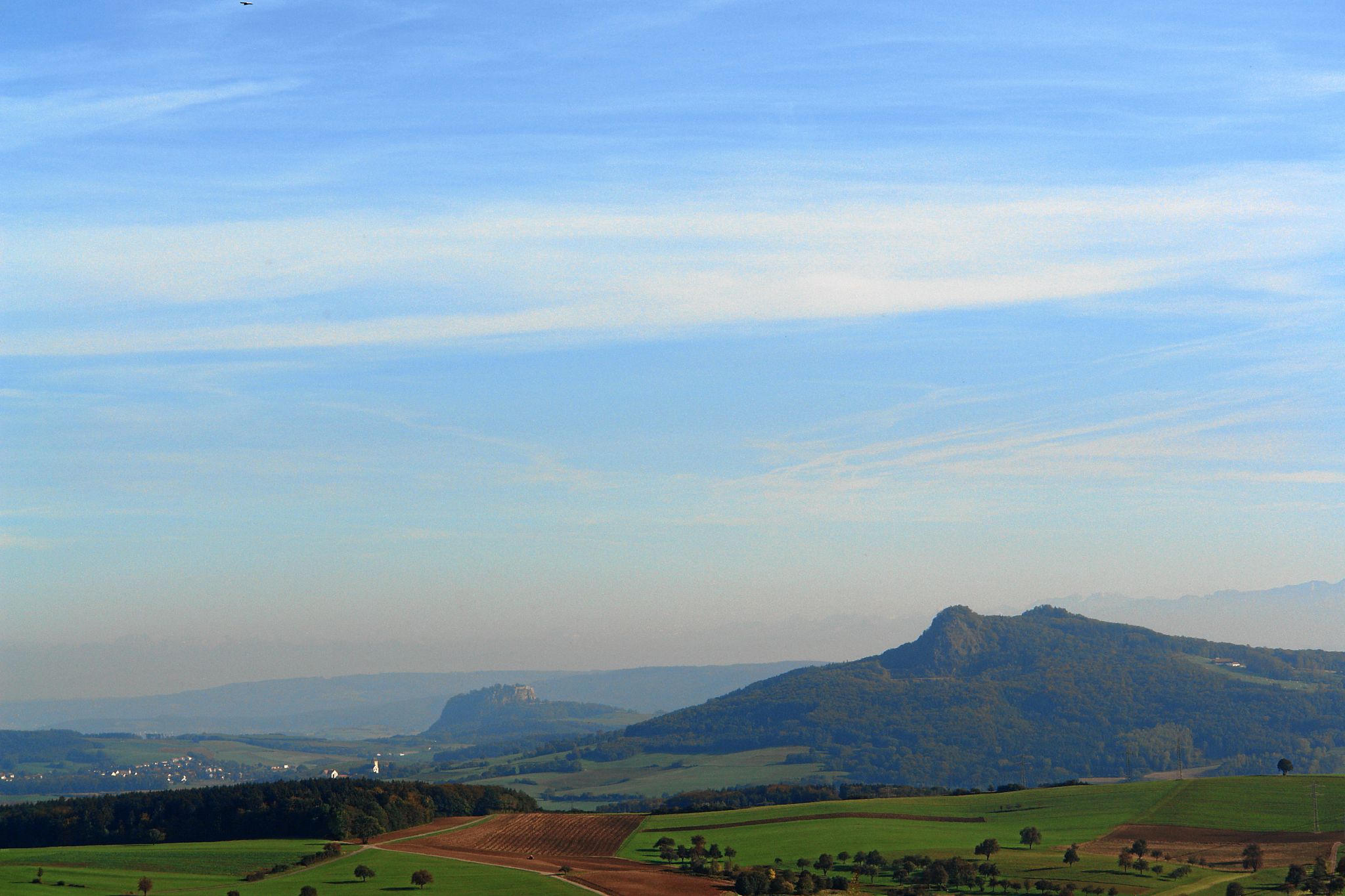Staatsweingut Meersburg, Hohentwieler Olgaberg, Weißer Burgunder 2009
Those of you who have ever followed up on our coverage under the no other place-tag know that we have a special thing for out-of-the-way wine growing regions. But that doesn't mean that we want people to judge these wines more benevolently because of the originality or their provenance, nor do we. What we want is emphatically both regionalism *and* quality in wine.  Staatsweingut Meersburg, owned by my beloved home state of Baden-Württemberg, has certainly delivered before on publicly guaranteed wine quality. And they also own Germany's highest elevated vineyard, the Hohentwiel Olgaberg. Named, improbably, in honour of Olga Nikolajewna Romanowa (1822-1892),a Russian princess and later queen of the kingdom of Württemberg [1], it covers the hillside of one of the cone-shaped former volcanoes of the Hegau - a landscape of great beauty and distinctiveness that slopes from the edge of the black forest down to the lake constance basin, but has not so far been able to boast of any wine growing credentials whatsoever.
Staatsweingut Meersburg, owned by my beloved home state of Baden-Württemberg, has certainly delivered before on publicly guaranteed wine quality. And they also own Germany's highest elevated vineyard, the Hohentwiel Olgaberg. Named, improbably, in honour of Olga Nikolajewna Romanowa (1822-1892),a Russian princess and later queen of the kingdom of Württemberg [1], it covers the hillside of one of the cone-shaped former volcanoes of the Hegau - a landscape of great beauty and distinctiveness that slopes from the edge of the black forest down to the lake constance basin, but has not so far been able to boast of any wine growing credentials whatsoever.

And while it was by no means a disappointment, the Pinot Blanc recently on this Wine Rambler's tasting table could not quite put the region of its birth on the wine map, either: Straw colour. Nice, and very typical, Pinot Blanc aromatics: honeydew melon, raw pumpkin, ripe apples, the tiniest hint of almond biscuits in the background. On the palate, clean and fairly polished fruit, a well made wine. I had just two minor complaints: The acidity seemed a tad unripe to me and there was a little alcoholic sharpness on the palate, which together pulled the wine ever so slightly off-balance. As always, this is much more of a problem when you drink a wine without food. With it, this is a reliable and pleasant companion with a story to tell.
[1] Historical geography nerds take note: The Hohentwiel belonged to the duchy, later kingdom of Württemberg as an exclave within Baden territory until 1969, when the boundaries were straightened for administrative efficiency, and it became part of Baden both wine-wise and politically.

Comments
Typical Pinot Blanc
Something struck me when reading your review, and that is that I don't know how long I have to go back for a Pinot Blanc that I did not find to be a typical representation of the grape variety. Pretty much all German Pinot Blanc I have had felt stylistically right, no matter how I rated the wine's actual quality. Does that means there is a consensus in German winemaking how Weißburgunder should feel like, or was my experience just a little random? Further experiments are needed - good thing it happens to be asparagus time!